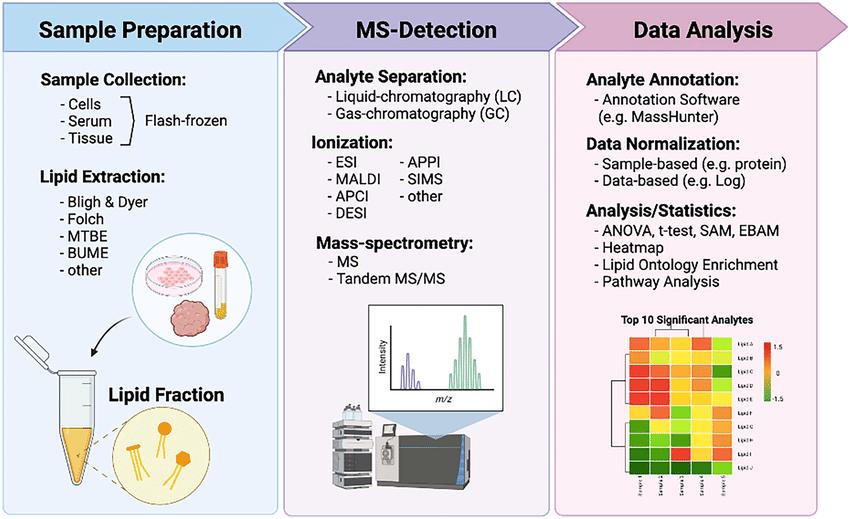Quantitative Lipidomics Based on DCL™
Background & Overview
Lipids are a heterogeneous group of small hydrophobic or amphiphilic compounds that are directly involved in membrane trafficking, regulating membrane proteins, cellular structure, and creating specific sub-compartments in membranes that contribute to cellular function. Several studies have shown that abnormal lipid metabolism is highly correlated with various diseases. Lipidomics will therefore become an essential toolkit in cellular and molecular medicine.

BOC Sciences has developed mass spectrometry (MS) and deuterium labeling-based lipid quantification techniques for monitoring quantitative changes in lipids between normal and disease states to understand the pathophysiology and reveal the biology of various diseases associated with lipid metabolism landmark. Our technique not only provides efficient quantitative dynamic range with reasonable accuracy and precision, but is more cost-effective.
What We Offer
Entrust your lipidomics research to scientists at BOC Sciences, who have decades of collective experience in lipid synthesis, purification, and characterization. Our lipid analysis laboratories are equipped with state-of-the-art chromatography/mass spectrometry systems and data analysis software, enabling us to provide quantitative lipidomics services to meet your specific project needs.
 Fig.1 General Workflow of Lipidomics.[2]
Fig.1 General Workflow of Lipidomics.[2]
Results You Can Trust
Sample processing
- Optimized sample extraction protocols guided by accepted literature methods
- Partially metabolized deuterium oxide labeling as a quantitative lipidomics tool to increase coverage of lipid species in quantitative MS
- Best practices for preparing repeat sets to maintain sample integrity for assessing reproducibility
LC-MS/MS and lipid identification
- Highly reproducible chromatographic separations for accurate quantification
- Retention times and accurate masses of rigorously validated true standards of fatty acids are used for lipid identification
Relative lipid quantification
- The Cartesian coordinate system was used to determine the ratio between unlabeled and D-labeled lipids in mixed samples
- Design a variety of experiments to test the accuracy and precision of quantitative measurements
Result processing
Timely updates, interactive real-time data review, and strictly confidential comprehensive reporting
The partial deuterium labeling strategy employed by BOC Sciences is more cost-effective for isotopic enrichment in target molecules. Ease of management and low cost make our technique suitable for long-term quantitative analysis of a wider range of biological systems, including plants and mammals. In addition, we were able to D-label various biomolecules such as proteins and carbohydrates, showing that our technique is equally applicable to other quantitative omics studies.
If you are interested in our services, please contact us immediately, then fill in the complete inquiry form, and we will reply to you as soon as possible.
References
- Kim J, et al. Deuterium oxide labeling for global omics relative quantification: application to lipidomics. Analytical chemistry. 2019, 91(14): 8853-8863.
- Ward A V, et al. Advances in analyzing the breast cancer lipidome and its relevance to disease progression and treatment. Journal of mammary gland biology and neoplasia. 2021: 1-19.



 Fig.1 General Workflow of Lipidomics.[2]
Fig.1 General Workflow of Lipidomics.[2]
